- July 09, 2019
Mold Remediation | Mold Removal

A mold remediation project is something that might be small enough to handle on your own or requires professional intervention. Costs range from the price of some cleaning products and some elbow grease to thousands in professional restoration services like shown above. This large price discrepancy is why hiring an independent mold inspector separate from the removal process is a wise decision. Having an unbiased third party assess your proper is the best way to determine exactly what your home or business requires in terms of cleaning.
First, we will discuss situations that professional mold removal services are NOT necessary. These instances can be seen when common non-toxic mold like cladosporium or basidiospores are seen throughout a property. Examples of this type of mold growth can be seen in showers, tubs, sinks, around window ledges, and on air conditioning vents. Fungus like this grows because of condensation that happens at a place where environments naturally change from hot to cold. Anyone can handle a cleanup like this because it is happening on a non-porous (Hard) surface like tile, aluminum, or metal and the species present is non-toxic. A bleach based cleaner can be used to clean up this type of growth, but we always recommend a more specific mold cleaning solution.
On the other hand when a home or business has had some type of water damage you may require professional restoration services. Things like a pipe burst/leak, roof/window leak, flooding can all cause these types of issues. Organic building materials like wood, drywall, and insulation are perfect nutrients for mold to feed on. Add water to the equation and you have the recipe for some serious problems. Even if you do have these types of issues, it is possible that they can be cleaned and dried before any fungus starts to grow. Having air and surface samples collected by an independent mold inspector is the best way to determine if any problems have indeed started from the water damage. In the event mold colonies have in fact started to sprout on the building material inside your home or business, here is a typical procedure for what needs to be done in order to get rid of the problems.
Personal Protective Equipment (PPE)

- Gloves are to be worn to remove all infected building materials.
- Disposable Tyvek coveralls covering both the head and shoes shall be worn.
- Full-face respirators are to be worn
Containment

- Complete isolation of the work area using plastic (6 mil poly) sheeting sealed with tape.
- This area should be large enough to house the Kitchen Cabinets after their removal.
- Sealing with plastic sheeting (6 mil poly) all ventilation, ducts/grills, fixtures and other openings.
- Use an exhaust fan with a HEPA filter to generate negative pressurization (ventilating to the outdoors). Use the appropriate sized unit for the space. The air exchange rate must be six times per hour.
HEPA Vacuum
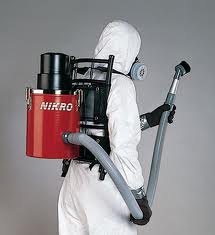
- The contained area is to be HEPA vacuumed, starting at highest point and working down to the floor.
Applying Biocide
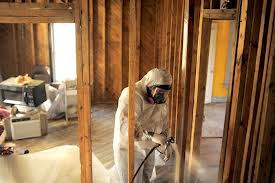
- Apply biocide to visible fungal growth prior to removal of material. Wait thirty minutes before removing the material. This provides sufficient time for the biocide to disinfect the material and reduces the dust generated because the material is wetted.
Removing of Contaminated Materials
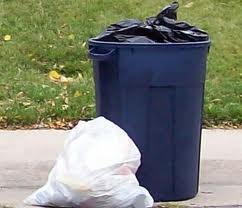
- Remove infected drywall, insulation and building material least twelve inches past any visual mold (wood paneling and drywall in laundry room area will need to be removed at least 2 feet/past any visual water marks).
- All debris should be double bagged in 3 mil contractor bags twisted, goose necked and sealed with duct tape.
- The sealed bags are to be wiped clean with the appropriate disinfectant in the containment before transport to the disposal area.
- There are no special requirements for the disposal of moldy material. Moldy materials that are bagged can be disposed of with other general waste.
Cleaning the Contained Areas
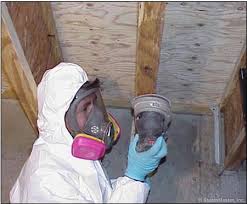
- After the contaminated material has been removed, the contained area is to be HEPA vacuumed again.
- If any visual mold is seen on studs HEPA sand affected area.
- The contained area is to be wiped down with a biocide and/or detergent solution.
- The contained area is to be HEPA vacuumed again.
Air Cleaning

- An Air Scrubber should be placed in the containment area during remediation and approximately 48-72 hours after work is completed.
Air Duct Cleaning
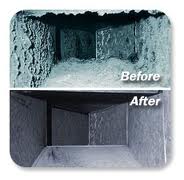
- Reset
- Coils Cleaned
- Ducts Cleaned
Containment Used During Reconstruction
- After the containment has passed clearance testing, the enclosure can be used to contain the dusts generated by sheetrock sanding and taping activities. This is done to reduce the clean up when reconstruction is complete.
As you can see the above steps require both equipment and experience beyond that of the average individual. Since indoor mold growth has been shown to negatively impact people’s well being, we HIGHLY recommend hiring a professional if your problem is serious enough. It is also wise to air samples done within the containment area once the restoration company hired believes it is complete. Making the mold removal company pass a clearance test helps make sure the job is complete and your home has in fact returned to normal. If you’d like to setup a pre or post remediation inspection, please give MI&T a call at 855-600-6653 to speak with a customer representative.

